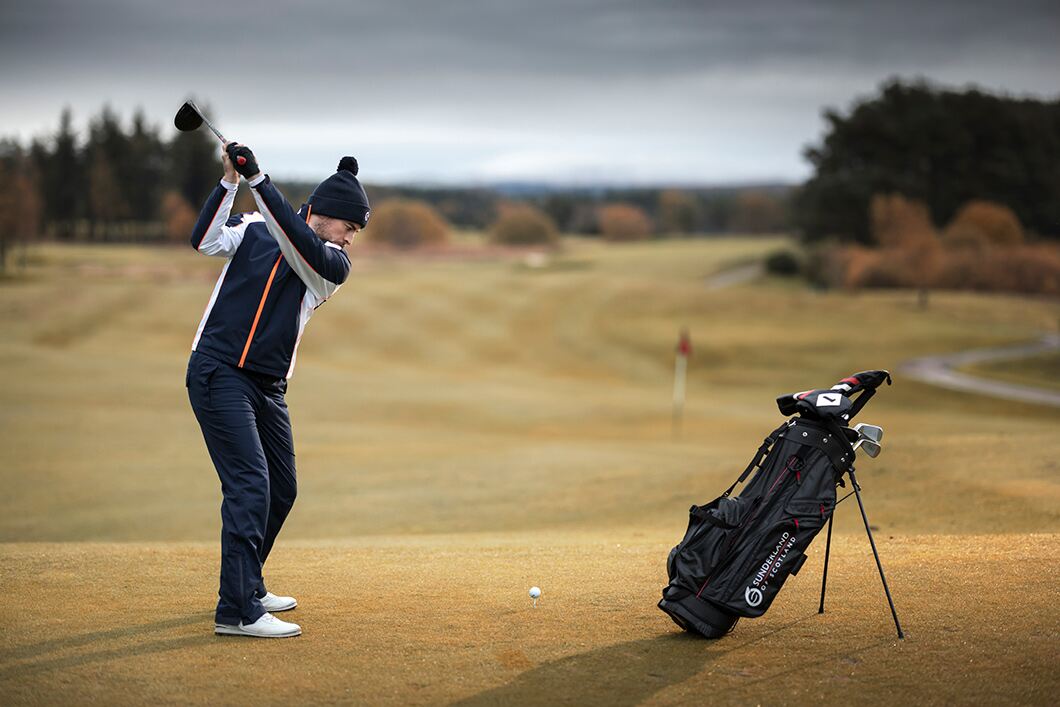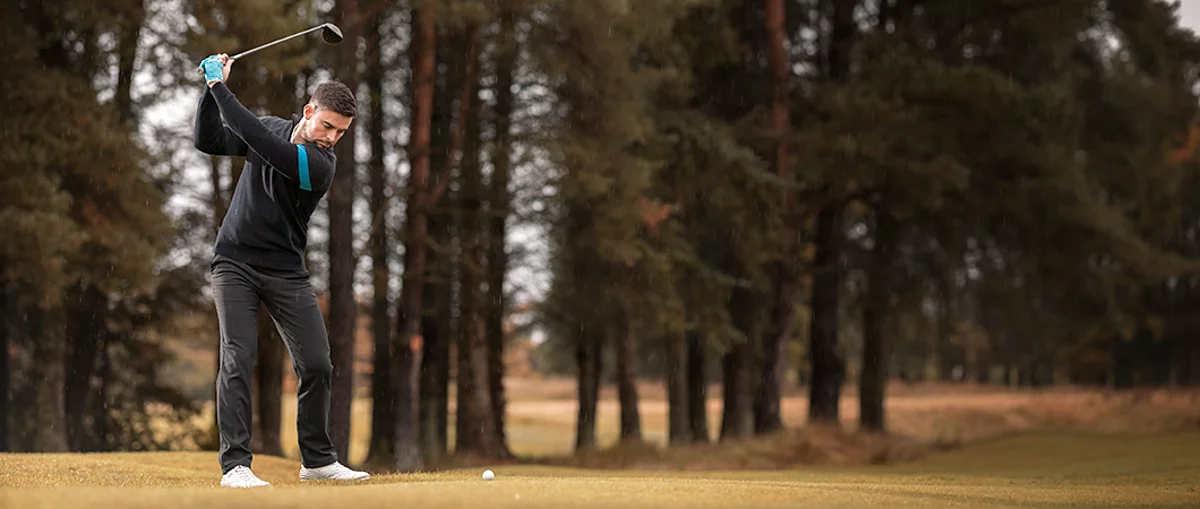Table of Contents
- What is backspin?
- What are the benefits of backspin?
- How to get backspin on a golf ball
- Your swing
- Glenmuir golf
- FAQs
- Final thoughts
Taking the time to improve different aspects of your golf game can have significant benefits. Learning how to create backspin can help with various shots, and this article will help you every step of the way.
Keep reading to find out what backspin is, its benefits, and the secrets behind creating backspin.
What is backspin?
Backspin is precisely what it sounds like: the backward rotation during the flight of the golf ball.
Backspin can also be called underspin or slice, and impacts the distance you get on drives.
What are the benefits of backspin?So, why should you learn how to generate backspin? Two main reasons putting more backspin on your drive can benefit you, these are:
LiftBackspin on a golf course can help to create lift and increase the distance of your drive. Backspin allows the dimples in the golf ball to increase lift and distance, and also help to dictate the direction in which the ball travels.
ControlBackspin also helps you achieve greater control of the golf ball after it lands, which is particularly beneficial in your short game when you land on the green and want the ball to stop quickly. The increased control from backspin allows you to avoid potential obstructions on the ground that could affect the ball's trajectory. |
How to get backspin on a golf ball
Setup
Check the grass
The first step you should take is to check the grass from which you are hitting the ball.
Shorter grass is best to achieve minimal resistance and minimises the risk of grass getting between the clubface and the golf ball.
Choosing your ball
When choosing your golf ball, you will typically have a choice between soft-core golf balls and hard-core.
Soft-core balls tend to allow more backspin and are great for practice. Softer covers help the ball grip clubs better, thus improving backspin.
Hard-core golf balls usually have a compression rating of 100 and are designed for greater distances. Golf balls with a lower compression rating of around 90 are better for backspin.
Choosing your club
Lofted golf clubs such as lob wedges, wedges, and irons are best suited to putting backspin on your shot. An angled golf club head has benefits, and because height is a priority with this kind of shot, clubs below a 7-iron are recommended.
Watch how you can use a lob wedge to send the ball high and use backspin to control the ball.
After selecting a club, check to ensure there is no dirt or grass on the club head. You should also keep an eye out for damage that could affect the club's performance. Your club face should be clean and we suggest using a golf club cleaner for this.
If you find you have a damaged golf club, we recommend choosing another club. You can then check to see whether the club can be repaired or should be replaced.
Your swing
Positioning
Acceleration
Swing
Divot
If the divot is too deep, you might have too sharp an approach, and you should practice your technique to find a style that results in a short, shallow divot.
Follow through
Your follow-through is another important step, and you should maintain good form. Try keeping your wrists straight even when the club comes into contact with the ground.
Maintaining the correct position helps you maintain the acceleration and contact necessary to create backspin.
Glenmuir golf
Practising is an integral part of improving your game. Getting out on the course whenever you can is often easier said than done, but you will start seeing significant developments by putting in the hours. Glenmuir makes it easy for you to look and feel great when playing golf by providing an extensive range of clothing and accessories.
Shop the broad range of men's and women's shirts, sweaters, outerwear, trousers, and mid-layers to find the perfect outfits for comfort and performance.
Choose from a range of materials, including cotton, lambswool, merino wool, cashmere, and specially designed performance wear that boasts thermoregulating technology and moisture-wicking properties.
Explore exclusive golf outfits and ensure you are decked out for the course and driving range.
FAQsDoes wind make a difference to backspin?Yes, the wind will make a difference to your backspin. Driving into the wind can result in a greater spin, but it may not be the kind you want. You may enjoy increased backspin and distance on your drives, or get a side spin. Side spin can cause the ball to travel off course; the higher it goes into the wind, the more likely it is to happen. Driving with backspin when there isn't too much head-wind or avoiding backspin in windy conditions is advised. What distance is easiest for practising backspin?When practising your backspin, accelerate through the swing and contact. Because of this, it is significantly easier to practise with long shots. Practising backspin on long shots exceeding 100 to 150 yards until you get into the swing of it is recommended. You can then start to practise your backspin on your short game and make sure you can hit the green and keep your ball there. What is the face of the ball?The face of the ball is the area of the ball you see when looking at it straight on.
To create a backspin, hit the ball on the back face in a relatively low area. When the ball is hit lower, it typically creates more spin, known as the "vertical gear effect". What should I do with divots?Divots are part of achieving backspin, as you must maintain club head speed as it contacts the ball. But you shouldn't just leave it as it can take months to heal, and in some cases, it will never make a full recovery. If your divot still has soil attached, put it back into place and press down firmly to help establish contact between the soil and roots. It also helps to create a smooth surface which is important for a golf course. Divots can also be filled by divot mix, which typically contains sand and seed to help the turf grow again. When filling a divot, add the mixture to just below the level surface around it and flatten it out. How can I practise getting backspin at the driving range?Practising getting backspin on your drives at a driving range is relatively straightforward and can be achieved using the Tee Drill. Put one tee about half an inch in front of the golf ball, pushing it completely into the ground. Do the same with another tee but place this one to the outside. When you swing, try to break your first tee, and you should create a divot that starts at the second tee's point, is no deeper than an inch, and continues for no more than five inches. This exercise will help you practise your downward angle of attack and hit the ball first before the ground. You should always ensure you hit the ball before the ground to minimise the risk of dirt or grass between the face of the club and the ball. |
Final thoughts
Taking the time to practice all aspects of your game can be time-consuming. However, you must show some dedication if you want to see results.
Getting maximum spin on a golf shot can be challenging, and getting results on shorter shots can be even trickier. Eventually, you will have a wedge shot to envy.
Following the tips above should help your game and ensure you enjoy long drives and more control when the ball lands.
If you plan to hit the driving range or golf course more often, you will need the proper clothing.
Thankfully, Glenmuir has a long history of providing high-quality golf wear for men, women, and juniors that want to enjoy looking great on the course, feeling comfortable, having protection from the weather, and having better performance.




